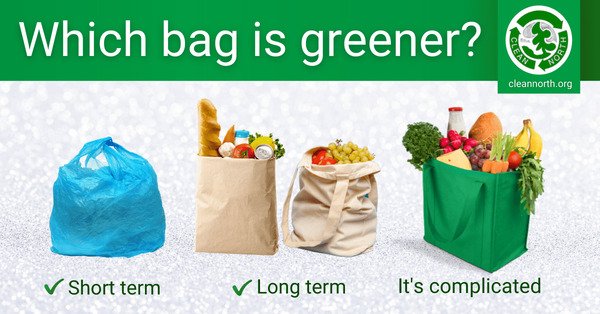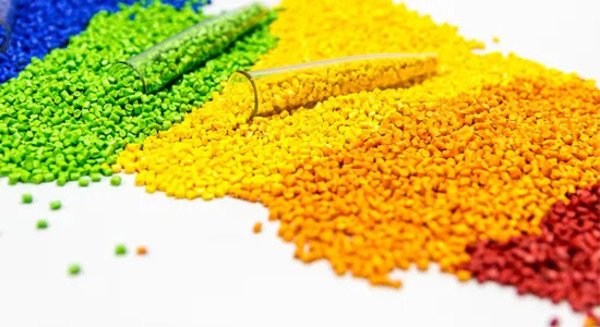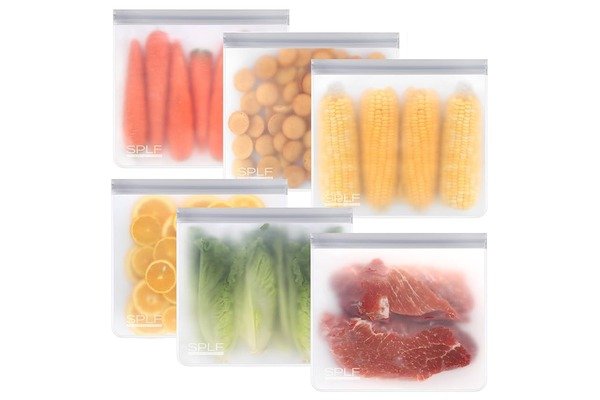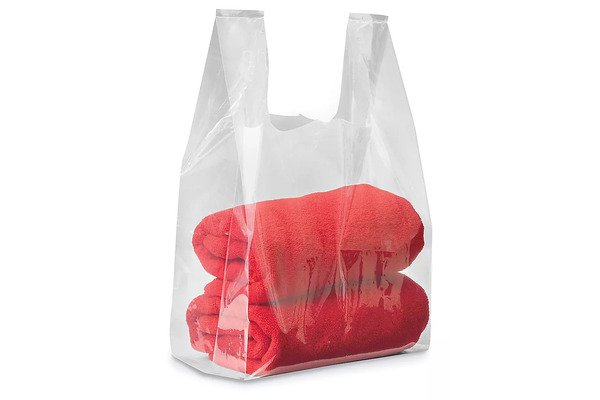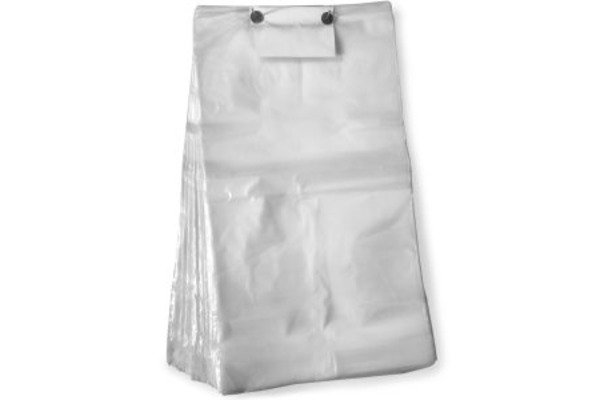
Are slow production speeds and high material waste hurting your bottom line? You see competitors fulfilling large orders quickly, and you worry about falling behind. A high-speed T-shirt bag making machine with the right features is the solution to this problem.
A high-speed T-shirt bag machine’s core features include an energy-saving servo motor1, automatic unwinding with tension control, multiple production lines, and a precise sealing and cutting system with photocell correction. A user-friendly PLC touch screen is also essential.
These features are not just items on a spec sheet. They work together as a complete system. The goal of this system is to maximize your production output while minimizing your costs. The servo motor provides the speed and precision. The automatic systems reduce the need for manual labor and prevent errors. The sealing and cutting units ensure every bag you make is high quality. This combination allows you to produce more bags, better bags, and with less waste. This is how you gain a competitive edge in the packaging market.
At BagMec®, we design our machines around these core principles. For example, our patented "Smart Tension Control2" directly addresses film feeding issues. Our energy-saving servo motors cut down on your operational costs. We focus on these details because they have a big impact on your daily operations. A reliable machine lets you focus on growing your business, not on fixing production problems.
What Does "High-Speed" Mean? How Many Bags Can It Make Per Minute?
You often see the term "high-speed," but what does that mean in real numbers? Let's look at the actual production capacity you can expect from our machines.
"High-speed" means the machine can produce from 200 up to 1,200 bags per minute. The final output depends on the model, the number of production lines (single, double, or four), material thickness, and the specific size of the bags being produced.

Understanding Production Speed
The number of bags per minute is a key performance metric. But it is not a single, fixed number. Several important factors influence the final speed. Understanding them helps you choose the right machine and set realistic production goals.
Factors Influencing Production Speed
- Number of Production Lines: This is the most significant factor. A double-line machine will roughly double the output of a single-line machine, and a four-line machine will double that again.
- Bag Size: Smaller bags require less film to be fed for each cycle. This means the machine can cycle faster, resulting in more bags per minute. Longer bags take more time.
- Material Thickness (Microns): Thicker films, like those used for heavy-duty bags, require more heating time for a strong seal. This can slow down the machine's cycle rate to ensure seal quality. Thinner films can be processed much faster.
- Printed vs. Unprinted Film: If you are using printed film, the machine's photocell needs to read a registration mark on each bag. This ensures the cut is in the right place. This constant checking can slightly slow the operation compared to running plain, unprinted film.
Here’s a table showing how the number of lines affects potential output:
| Machine Type | Typical Speed per Line (Bags/Min) | Total Output (Bags/Min) | Ideal For |
|---|---|---|---|
| Single Line | 200 - 300 | 200 - 300 | Startups, custom small orders |
| Double Line | 200 - 300 | 400 - 600 | Growing businesses, medium-scale production |
| Four Line | 200 - 300 | 800 - 1,200 | Large-scale industrial manufacturing |
How We Measure Speed at BagMec®
When we state a machine's speed, like our T-Shirt Bag Making Machines which can range from $17,000 to $32,000, we base it on standard conditions. This usually means an average-sized bag made from a common film thickness. We perform a 72-hour continuous operation stress test on our machines before shipment. This test confirms that the machine can maintain its advertised speed consistently without overheating or a drop in quality. This gives you confidence that the speed we quote is a speed you can achieve in your factory.
What Are the Advantages of Automatic Feeding and Unwinding Systems?
Manually loading and managing film rolls is a major source of downtime. An automatic system solves this by keeping your production line running with minimal interruption.
An automatic feeding and unwinding system3 maintains constant film tension and reduces downtime. This prevents material waste from wrinkles or stretching and ensures every bag is uniform. It also frees up your operator's time for more valuable tasks.
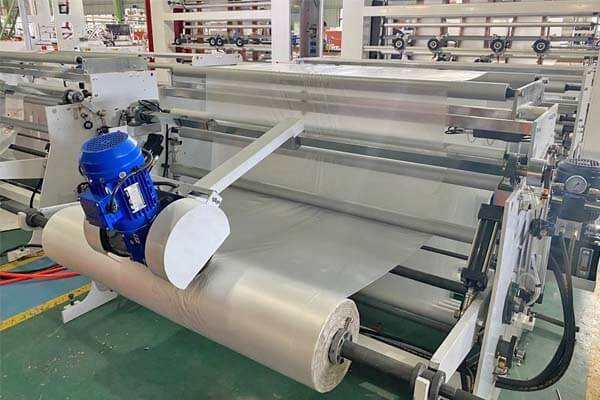
Eliminating Production Bottlenecks
Manual processes are often the weakest link in a production chain. The unwinding process is a perfect example. If an operator has to manually adjust the film roll, the machine has to be stopped. If the tension is wrong, you get defective bags. Automation removes these variables.
The Problem with Manual Unwinding
Without an automatic system, an operator is responsible for:
- Loading Heavy Rolls: This is physically demanding and can pose a safety risk.
- Controlling Tension: As the film roll gets smaller, its speed needs to change. If the tension is too loose, the film can wrinkle. If it's too tight, it can stretch, distorting prints and bag dimensions.
- Splicing Rolls: When a roll runs out, the operator must stop the machine and splice the start of a new roll to the end of the old one. This process takes time.
How Our "Smart Tension Control" Works
Our machines feature a patented technology we call "Smart Tension Control." It consists of sensors and a variable-speed motor on the unwinding stand.
- Sensors Measure Film Slack: The system constantly measures the tautness of the film as it enters the machine.
- Motor Adjusts Speed: If the film becomes too loose or too tight, the system automatically adjusts the speed of the unwinding motor.
- Consistent Feed: This ensures the film is fed into the machine at a constant, even tension, regardless of the roll size or machine speed.
This technology is a key reason one of our German clients was able to reduce their material waste by a remarkable 18%. Consistent tension means fewer misaligned bags that have to be thrown away.
Tangible Benefits for Your Business
- Reduced Labor Costs: One operator can oversee multiple machines because they are not tied up with managing the film rolls.
- Increased Uptime: The machine doesn't need to stop for tension adjustments.
- Lower Material Waste: Consistent feeding eliminates wrinkles, stretching, and other defects.
- Improved Quality: Uniform bags with consistent dimensions build a reputation for quality.
Servo Motor vs. Standard Motor: What's the Difference and Why Does It Matter?
The motor is the heart of your bag making machine. The type of motor you choose directly impacts speed, accuracy, and even your monthly electricity bill.
A servo motor is more precise, faster, and up to 30% more energy-efficient than a standard motor. It provides exact control over film feeding and cutting. This results in higher quality bags, less waste, and significant long-term operational savings.
The Engine of Your Productivity
At first glance, a motor just makes things move. But how it moves is critical in bag making. The process requires constant starting and stopping as each bag is sealed and cut. This is where servo motors show their true value.
Head-to-Head Comparison: Servo vs. Standard Motor
| Feature | Servo Motor | Standard (Induction) Motor | Why It Matters |
|---|---|---|---|
| Precision | Extremely high control over position and speed. | Less precise; relies on clutches and brakes. | Ensures every bag is the exact same length. |
| Speed | High acceleration and deceleration. | Slower to start and stop. | Allows for more bags to be made per minute. |
| Energy Use | Only uses significant power when moving. | Consumes power continuously while on. | Reduces electricity costs by up to 30%. |
| Noise Level | Very quiet operation. | Can be quite loud. | Creates a better, safer working environment. |
| Maintenance | Fewer mechanical parts to wear out. | Brakes and clutches need regular replacement. | Lower long-term maintenance costs and less downtime. |
Why Precision Matters for T-shirt Bags
A T-shirt bag machine performs a series of quick, repetitive actions: feed the film, seal it, and cut it. A servo motor controls the film feed rollers with incredible accuracy. When the machine says "feed 500mm," a servo motor feeds exactly 500mm. A standard motor might feed 501mm or 499mm. This small difference adds up, leading to inconsistent bag sizes and wasted material. With printed bags, this precision is even more critical to make sure the brand logo is centered perfectly on every bag.
The Long-Term Cost Savings
The initial cost of a machine with a servo motor can be higher. But the return on investment is fast. Our servo-driven machines use about 30% less energy. If a standard machine costs $5,000 per year in electricity to run, our machine saves you $1,500 every year. Over the 10-15 year lifespan of the machine, that's a saving of over $20,000 in electricity alone. This doesn't even include the savings from reduced waste and lower maintenance costs.
How Many Production Lines Do You Need? Single, Double, or Four Lines?
Choosing the number of production lines is a strategic decision. It depends on your current order volume, your budget, and your plans for future growth.
Single-line machines are best for startups and custom jobs. Double-line machines offer a great balance of high output and value for growing businesses. Four-line machines are built for large-scale manufacturers who need to maximize their production capacity.
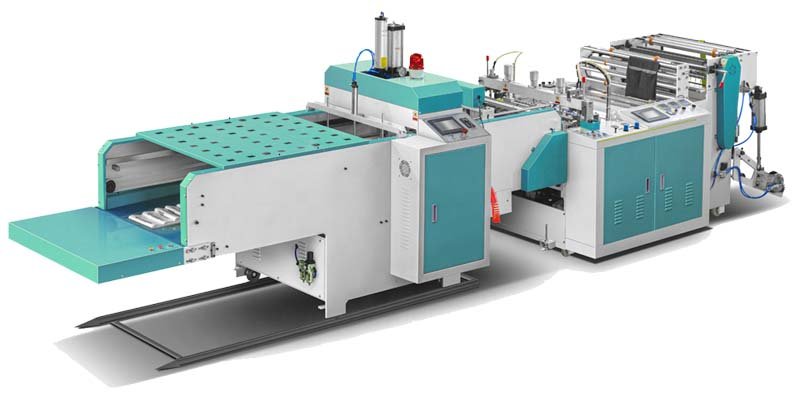

Scaling Your Production
Your machine choice should match your business plan. Buying a machine that is too small can limit your growth. Buying one that is too large can be an unnecessary expense. Let's break down who should choose each option.
Who Should Choose a Single-Line Machine?
A single-line machine is the perfect entry point.
- New Businesses: If you are just starting out, a single-line machine is a lower-risk investment.
- Custom Orders: It's ideal for producing smaller, specialized batches for specific clients without having to do a large production run.
- Limited Budgets: These are our most affordable models, making them accessible for companies with tight capital.
- Small Spaces: They have the smallest footprint, fitting easily into smaller workshop floors.
Who Should Choose a Double-Line Machine?
This is our most popular configuration, and for good reason.
- Growing Businesses: You have a steady stream of orders and need to increase your output to meet demand.
- Standardized Products: You primarily produce one or two popular bag sizes and want to make them efficiently.
- Balancing Cost and Output: A double-line machine gives you twice the output of a single-line machine without doubling the cost or the floor space.
Who Should Choose a Four-Line Machine?
A four-line machine is a production powerhouse.
- Large-Scale Manufacturers: You supply major supermarket chains, retailers, or distributors.
- Maximum Efficiency: You need the lowest possible cost-per-bag, and running four lines at once is the way to achieve that.
- High-Volume Contracts: You have contracts that require you to produce millions of bags every month. The Indian logistics giant we worked with chose a high-capacity custom line to handle their massive volume of 2,500 bags per hour.
Here is a summary to help you decide:
| Consideration | Single Line | Double Line | Four Line |
|---|---|---|---|
| Initial Cost | Low | Medium | High |
| Output | Standard | High | Very High |
| Flexibility | High (good for small runs) | Medium | Low (best for large runs) |
| Floor Space | Smallest | Medium | Largest |
| Ideal User | Startup | Growing Business | Industrial Producer |
Does the Machine Support Automatic Waste Rewinding and Handling?
When you punch the handles into a T-shirt bag, a small piece of plastic is removed. Managing this waste can be a messy and time-consuming job if done manually.
Yes, our high-speed T-shirt bag machines are equipped with an automatic waste rewinding system. This feature collects the punched-out plastic scrap into compact rolls, which makes it easy to handle, recycle, or dispose of.
A Clean and Efficient Operation
A well-run factory is a clean factory. Small details, like how waste is handled, can make a big difference in overall safety and productivity. The pile of plastic "mouth pieces" can quickly become a problem if not managed properly.
How Automatic Waste Rewinding Works
The system is simple but very effective.
- After the bag handle is punched out by the die-cutter, the small, U-shaped piece of waste film is separated from the bag.
- A set of rollers guides this stream of waste material to a dedicated rewinding spindle.
- A small, independent motor slowly turns this spindle, neatly winding the waste plastic into a tight, dense roll.
- Once the roll is full, the operator can quickly remove it and start a new one, a process that takes only a few seconds.
The Benefits of a Clean Workspace
Without this system, the waste pieces would fall onto the floor around the machine. This creates several problems:
- Safety Hazard: Piles of slippery plastic film are a serious trip and fall risk for your operators.
- Lost Productivity: An operator would have to periodically stop the machine to sweep up and bag the waste.
- Contamination Risk: Loose waste can get blown into the machine's moving parts, causing jams or defects.
Supporting Sustainability and Recycling
Neatly rolled waste is much more valuable for recycling. Loose, messy scrap is often considered contaminated and may end up in a landfill. By providing clean, compacted rolls of a single type of plastic (LDPE or HDPE), you can often sell this waste to recyclers. This not only supports your company's sustainability goals but can also create a small new revenue stream. This aligns with our work with eco-conscious brands, who value every effort to reduce environmental impact.
How Accurate Is the Sealing and Cutting? Is There an Automatic Correction System?
Weak seals that break open and crooked cuts are signs of a poor-quality machine. We make sure our machines deliver perfect bags every time through precision engineering.
Our machines achieve a sealing and cutting accuracy of ±1mm. They are equipped with a high-precision photocell tracking system that automatically corrects the film's position. This ensures every printed bag is sealed and cut perfectly.
![]()
The Foundation of Quality
The quality of a bag is defined by two things: the strength of its seal and the neatness of its cut. No matter how fast your machine is, it's useless if it produces bags that can't hold their contents. This is why we focus heavily on the sealing and cutting mechanisms.
The Science of a Strong Seal
A strong, reliable seal depends on three factors, all of which our machines control with precision:
- Heat: The sealing bar must be at the exact right temperature for the specific film type and thickness. Our machines have a PID temperature controller that maintains the heat to within ±1°C.
- Pressure: The sealing bar must apply even pressure across the entire width of the seal. Our machines use a robust, heavy-duty frame and precisely balanced mechanisms to ensure uniform pressure.
- Time: The sealing bar must stay in contact with the film for the right amount of time—long enough to fuse the layers, but not so long that it burns through. The servo motor's precise timing controls this down to the millisecond.
How the Photocell Correction System Works
For unprinted bags, the machine simply cuts to a set length. But for printed bags, the cut must be in the correct position relative to the printed design.
- Registration Mark: A small, dark rectangle, called a registration mark, is printed on the film for each bag.
- Photocell Eye: A highly sensitive optical sensor, or "photocell eye," is positioned to detect this mark as the film feeds into the machine.
- Real-Time Adjustment: The photocell tells the PLC controller exactly where the mark is. If the film has stretched or slipped even slightly, the PLC will instantly tell the servo motor to feed a little more or a little less film for the next cycle. This guarantees the logo and other graphics are perfectly centered on every single bag. This is part of our 5-stage inspection protocol, where we verify this alignment with laser calibration tools before shipment.
Can the Bag Size Be Adjusted? What Size Range Is Supported?
Your customers will require bags of many different sizes. A machine that is flexible and easy to adjust gives you the power to say "yes" to more orders.
Yes, the bag size is fully adjustable on our machines. You can easily change the bag length and width through the touch screen. Our T-shirt bag machines typically support a width range of 200mm-450mm and a length range of 300mm-700mm.
Versatility for a Dynamic Market
The ability to quickly change from making one size of bag to another is a huge competitive advantage. It allows you to serve a wider range of customers, from small boutique shops to large grocery chains, with a single machine.
Supported Size and Material Range
While we can customize machines for special requirements, our standard high-speed T-shirt bag machines handle the most common sizes and materials used in the industry.
| Parameter | Standard Range | Notes |
|---|---|---|
| Bag Width | 200 mm - 450 mm | This covers small produce bags up to standard grocery bags. |
| Bag Length | 300 mm - 700 mm | Adjustable to any length within this range. |
| Film Thickness | 10 - 50 microns (0.01 - 0.05 mm) | Compatible with most LDPE and HDPE films. |
| Material Types | LDPE, HDPE, Biodegradable (PLA) | We can optimize for recycled materials too. |
How You Adjust the Bag Size
Changing the bag size is a simple, software-controlled process. There is no need for complex mechanical changes.
- Adjust Bag Length: The operator simply enters the desired bag length (e.g., "550mm") into the main screen on the PLC touch screen interface. The servo motor will automatically adjust the feed length.
- Adjust Bag Width: To change the width, you need to load a film roll of the corresponding width. For example, to make a 300mm wide bag with 50mm side gussets, you would load a 400mm wide roll of film.
This digital-first approach means a size changeover that used to take an hour of mechanical work can now be done in the few minutes it takes to swap the film roll.
Are There Optional Features Like Punching and Side Folding?
A basic flat bag has its uses, but the features that make a T-shirt bag so popular—the handles and the gussets—are created with specific optional modules.
Absolutely. We offer fully integrated optional features. The most essential are the automatic handle punching unit to create the T-shirt handles and the side gusset folding device to increase the bag's capacity.

Customizing Your Machine for Your Market
These optional modules allow you to turn a simple bag making machine into a specialized production line. By choosing the right features, you can produce higher-value products and enter new markets.
Automatic T-Shirt Handle Punching Unit
This is the system that cuts out the handles.
- How it Works: A hydraulic or pneumatic press drives a sharp steel die cutter (a "punch") through the sealed plastic. This happens after the bag is sealed but before it is separated from the film roll.
- Precision and Durability: Our punching dies are made from high-carbon steel for a long life and consistent, clean cuts. An imprecise punch can leave behind rough edges or fail to cut through completely.
- Waste Removal: As discussed earlier, this unit works in tandem with the automatic waste rewinder to remove the scrap material.
Side Gusset Folding Device
This feature is what gives T-shirt bags their volume.
- How it Works: Before the film enters the sealing and cutting area, it passes through a set of forming plates. These plates create two symmetrical inward folds along the sides of the film tube.
- Why it's Important: A gusset allows a flat bag to expand into a three-dimensional shape, dramatically increasing how much it can hold. This is essential for grocery bags, shopping bags, and take-out bags.
Other Custom Features We Offer
Our goal is to build the exact machine you need. Based on our customers' needs, we have developed other valuable add-ons:
- In-line Printing: We can integrate a simple flexo printer (1 or 2 colors) for adding logos or recycling info on the fly. For a complex, high-speed case, we helped an Indian client integrate QR code printing for their logistics bags.
- Logo Embossing Units: A small heated stamp can press a logo into the seal area for a subtle branding touch.
- Stacking and Conveyor Systems: For fully automatic operation, we can add a system that automatically counts, stacks, and conveys the finished bags to a packing station.
Is the Interface a Touch Screen? Does It Support Multiple Languages?
In the past, operating a bag making machine required extensive training and mechanical knowledge. Today, a modern interface makes operation simple, intuitive, and accessible to anyone.
Yes, all our BagMec® machines feature a large, color PLC touch screen as the standard interface. The system supports multiple languages, including English, Spanish, and Chinese, to meet the needs of our global clients. We can add more languages on request.
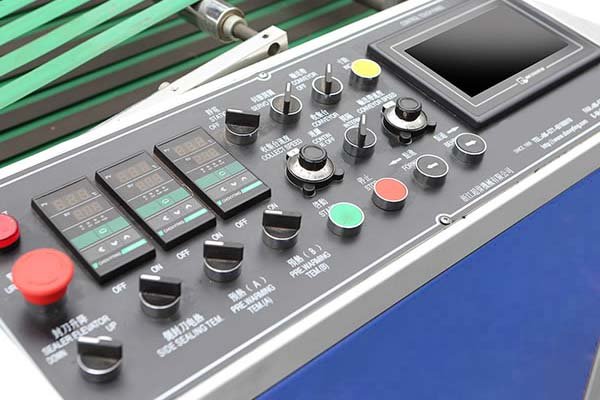
Putting Control at Your Fingertips
The control panel is where your operator interacts with the machine all day long. A well-designed interface improves efficiency, reduces errors, and makes training new staff much faster. This is why we've invested in making our PLC interface as user-friendly as possible.
What You Can Control from the Touch Screen
The touch screen provides a central hub for all machine functions:
- Production Settings: Set the bag length, machine speed, and batch count.
- Temperature Control: Monitor and adjust the sealing bar temperature.
- Diagnostics: The screen displays error messages and operational warnings (e.g., "Photocell cannot find mark"). This helps you troubleshoot problems quickly.
- Line Control: On multi-line machines, you can often control each line independently.
- Parameter Memory: You can save settings for different jobs. For example, you can have a saved profile for "Small Blue Bag" and another for "Large White Bag," allowing for one-touch setup.
The Advantage of a Multilingual UI
We serve clients in over 50 countries. A multilingual user interface (UI) is not a luxury; it's a necessity.
- Reduces Training Time: An operator like Carlos Mendez in Mexico can use the machine in Spanish from day one, without needing to learn English technical terms.
- Minimizes Operator Error: When operators can read all warnings and settings in their native language, the chance of making a costly mistake is significantly lower.
- Improves Efficiency: Operators can navigate menus and adjust settings faster when they are comfortable with the language. This focus on user needs is crucial, whether we are helping a procurement manager like Hans Fischer in Germany or a startup founder in India.
Future-Ready with Remote Diagnostics
Our modern PLCs are also IoT-enabled. This means if you have an issue you can't solve, you can grant our technical team secure, remote access to the machine's control system. We can view error logs, check settings, and diagnose problems from our headquarters in China. This "Future-Ready Technology" can save you from waiting for a technician to travel on-site, getting you back into production faster.
Which Features Should Beginners Pay Special Attention To?
If this is your first time buying a bag making machine, the number of options can seem overwhelming. Let's focus on the features that will make the biggest difference in your success.
Beginners should prioritize ease of use, reliability, and supplier support. This means focusing on a machine with an intuitive touch screen interface, a dependable servo motor, and automatic tension control. Most importantly, partner with a manufacturer who offers strong technical support.
A Checklist for First-Time Buyers
When you are starting out, your goal is to get into production smoothly and build a reputation for quality. The wrong machine can lead to constant frustration and downtime. Here are the features that will help you avoid that.
Feature Checklist for a First Machine
- ☑️ User-Friendly Controls: A multilingual PLC touch screen is non-negotiable. It will drastically reduce the learning curve for you and your operators. You want a screen that clearly displays status, speed, and any errors.
- ☑️ A Reliable Servo Motor: Don't try to save a little money by choosing a standard motor. The precision and low-maintenance operation of a servo motor will save you from countless headaches with inconsistent bag lengths and high electricity bills.
- ☑️ Automatic Unwinding with Tension Control: This automates one of the most difficult parts of running the machine. It will reduce your material waste and ensure consistent quality from the very first roll of film you run.
- ☑️ Robust Safety Features: Ensure the machine is CE compliant. It should have clear emergency stop buttons, safety guards over moving parts, and automatic shutdown features. Safety should always be your first priority.
- ☑️ Solid, Heavy Frame: Look for a machine built with high-carbon steel. A heavy, stable frame reduces vibrations at high speeds. This leads to better seal quality and a longer machine life.
The Most Important Feature: The Supplier
The machine itself is only part of the equation. As a beginner, you will have questions. You will need support. This is a challenge we see with new business owners like Priya Kapoor from our customer profiles, who struggle with a lack of technical support from other vendors.
At BagMec®, we see ourselves as your partner. We provide:
- End-to-End Expertise: Our in-house teams handle everything from design to after-sales support.
- Installation and Training: We offer optional on-site installation and training to ensure your team is confident and capable.
- Responsive Support: You can reach our team via email or schedule a call. With our remote diagnostics, we can often solve problems without you having to wait for a technician.
Choosing a supplier who is committed to your success is the most important decision you will make.
Conclusion
The core features of a modern T-shirt bag machine—its servo motor, automation, and precision controls—are all designed for one purpose: to make your business more productive and profitable. Partnering with a manufacturer like BagMec® ensures you get the right technology and support.
-
Explore how energy-saving servo motors can enhance efficiency and reduce operational costs in manufacturing processes. ↩
-
Discover the innovative Smart Tension Control technology that helps maintain consistent film tension, reducing waste and improving quality. ↩
-
Learn how automatic systems can minimize downtime and enhance production efficiency, leading to better quality and reduced waste. ↩

